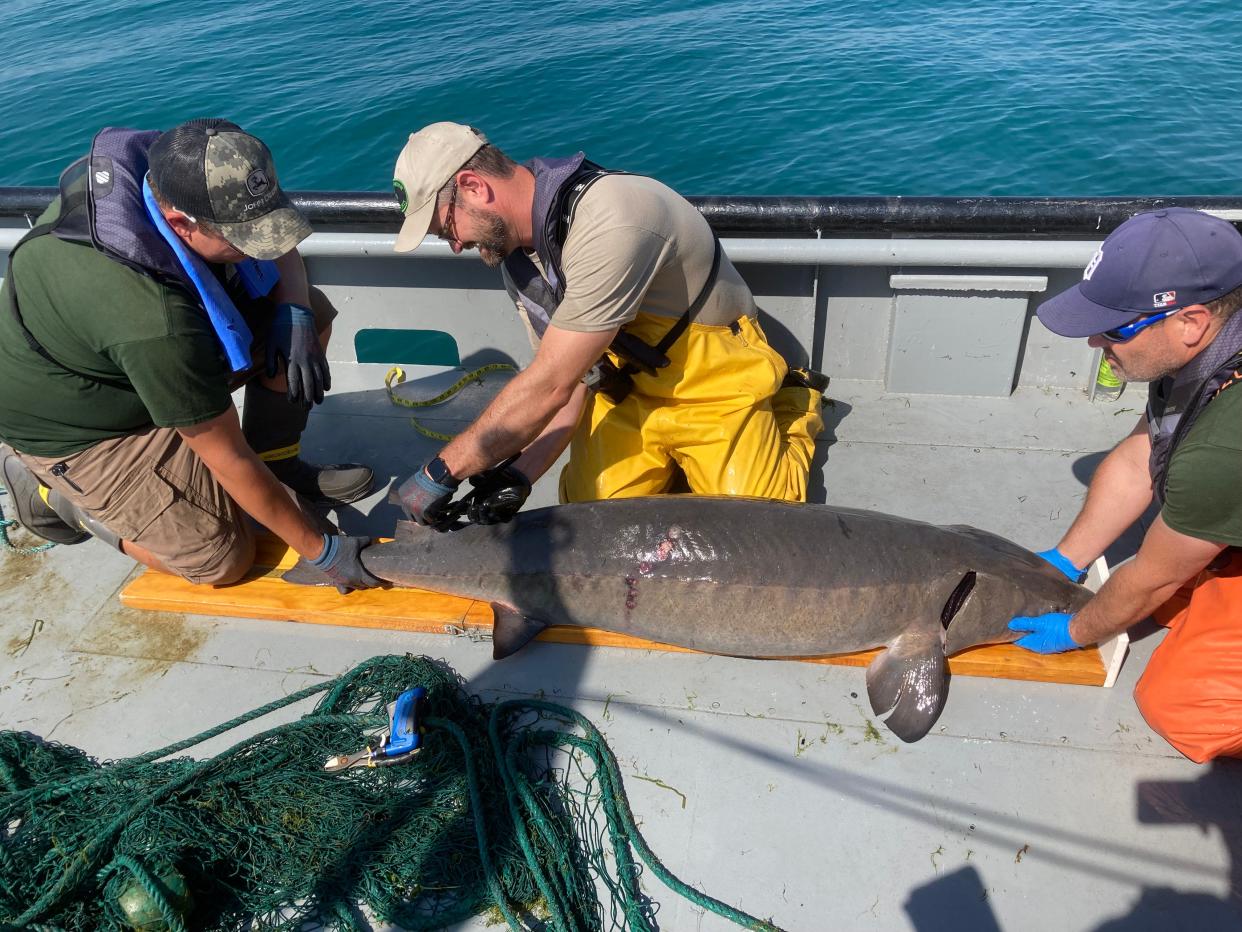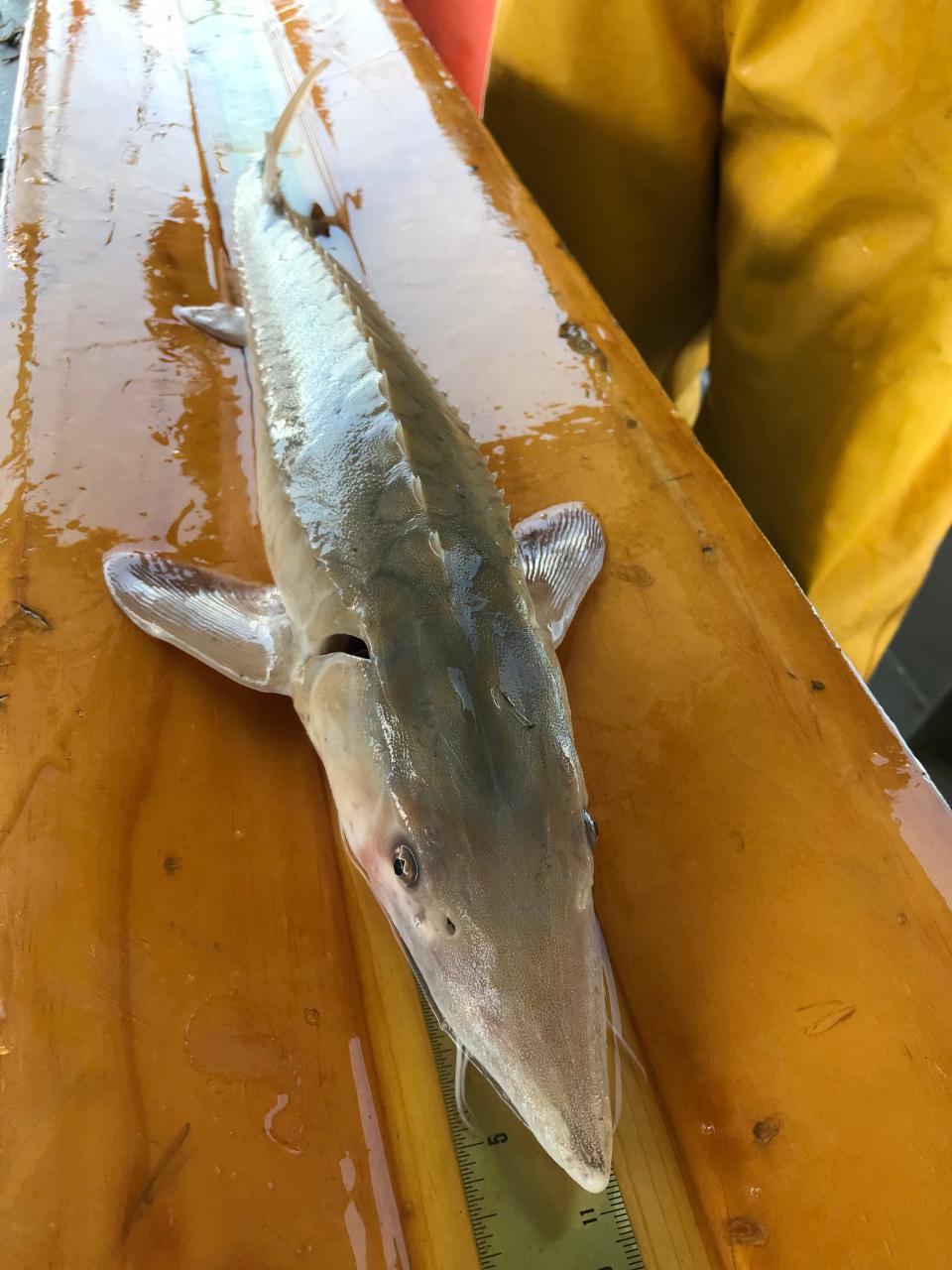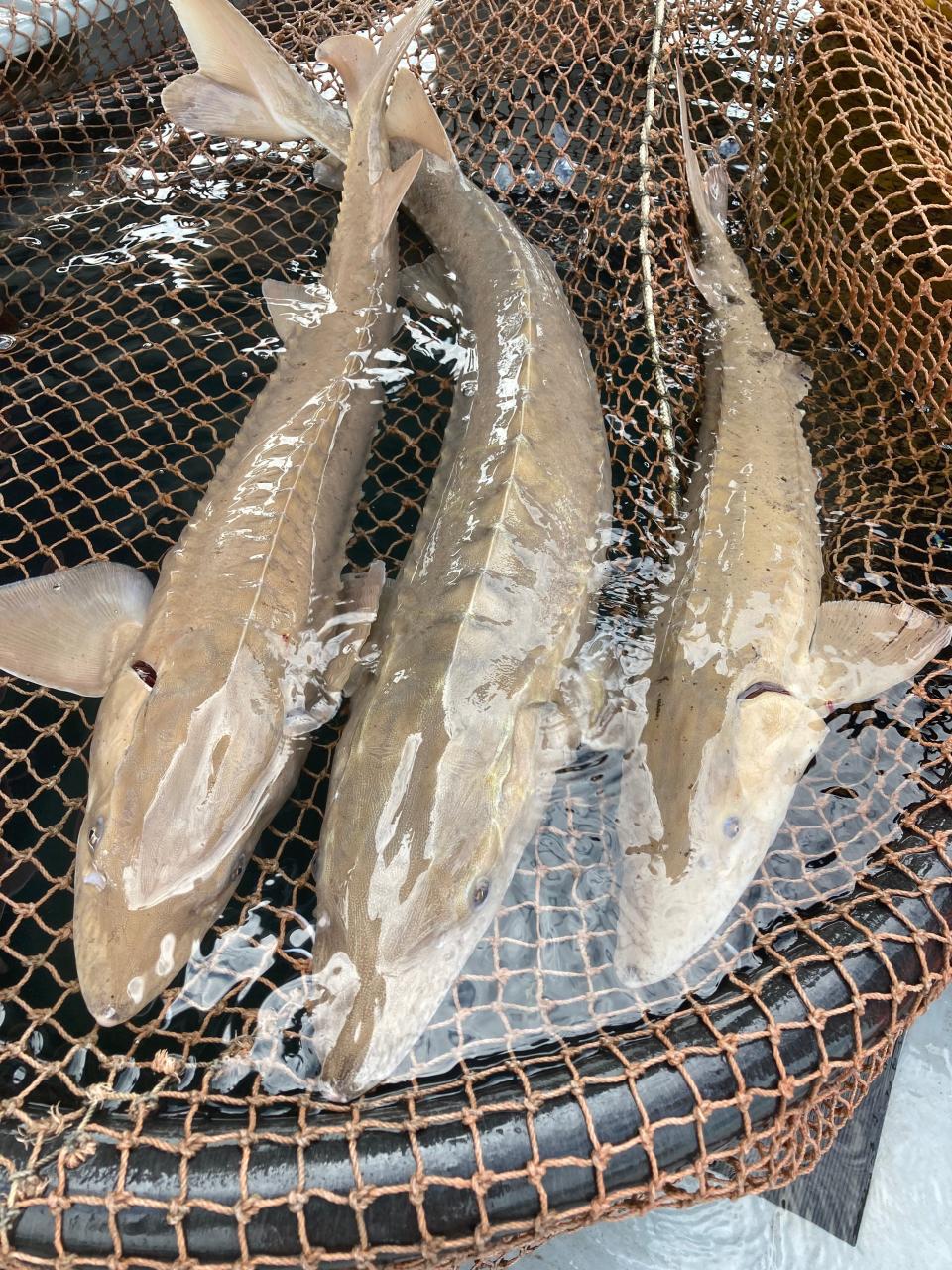St. Clair River lake sturgeon population used for research, restocking other rivers

The St. Clair River is more than just a safe haven for lake sturgeon, the largest species of fish in the Great Lakes. It's also a place to research and catch the fish so they can be enjoyed for future generations.
Justin Chiotti, a fish biologist with the U.S. Fish and Wildlife Service, said the department collected fish eggs from spawning fish in the upper St. Clair River and southern Lake Huron Wednesday. The eggs will be sent to hatcheries to restock rivers in the Saginaw river system and Maumee River in Ohio.
The St. Clair River is used because the fish found in the river are genetically similar to fish in Lake Erie and some areas of Lake Huron, Chiotti said. The population is also large enough that it won't be impacted by the harvesting activities.
The restocking program will hopefully restore fish populations to areas that have seen a huge decline from historic populations, Chiotti said.
What are lake sturgeon?
Lake sturgeon are found throughout the St. Lawrence, Hudson Bay, Great Lakes and Mississippi watershed. They can grow up to seven feet long and weigh several hundred pounds, said Andrew Briggs, fisheries research biologist with the Michigan Department of Natural Resources.
Sara Thomas, Lake Erie Unit manager for the Michigan Department of Natural Resources Fisheries, said sturgeons were heavily overfished a century ago. The population takes a long time to rebound because of their long life span and less frequent spawning habits.

The typical lifespan of a sturgeon is 55 years but individuals more than 100 years old have been found. Female lake sturgeon reach sexual maturity between 14 and 33 years, while male sturgeon reach maturity between 12 and 17. Females spawn only once every three to seven years while males spawn every one to four years, according to the department of natural resources.
The construction of dams in many Michigan rivers also prevented lake sturgeon from spawning, further limiting their habitat, Thomas said.
Briggs said lake sturgeon are important to the ecosystem because they are an indicator of healthy river systems.
"They're definitely an important fish to the ecosystem," Briggs said. "They often are an indicator of good water quality. They require spawning habitats other species of fish require so it's often an indicator of a good, heathy ecosystem if you have a good lake sturgeon population."
They are also cultural significant and a good ambassador to get people excited about protecting river habitats, Briggs and Thomas said.
“They are such a cool, unique fish," Thomas said. "It brings people into realizing the value of our waterways and the species that live there.”
Briggs also shows his work with lake sturgeon through Facebook at Andrew Briggs and TikTok at andrewbriggs_fishbio to get people excited about conservation. Pictures and videos show him throwing fishing hooks in the water and hauling in the huge, prehistoric-looking fish.
@andrewbriggs_fishbio #LakeSturgeon setline survey in St. Clair River, #Michigan. #fish #science #fyp #biology #puremichigan #sciencechannel #biologist #StClairRiver #fisheries ♬ Originalton - POV’s
As of Thursday, Briggs had 649 followers on Facebook and 852 followers on TikTok.
Summer setline surveys
Both the U.S. Fish and Wildlife Service and the Michigan Department of Natural Resources conduct summer setline surveys for lake sturgeon to track the population.
Briggs said during the survey, the team sets hooks overnight and pulls them each morning to see if any sturgeon were caught. They are currently in the second week of their survey in the north channel of the St. Clair River near Algonac, Briggs said Tuesday.

The fish that are caught are tagged, weighed, measured and checked for any injuries or abnormalities, then released back into the water. Tagging the fish helps researches estimate lake sturgeon's population size, while weighing and measuring the fish helps determine overall health.
Briggs said the Department of Natural Resources, the U.S. Fish and Wildlife Service and their Canadian counterparts use the data to inform conservation practices and monitor the overall health of the species.
Lake sturgeon are considered threatened in Michigan, however, the St. Clair and Detroit river systems have a larger, more stable population than most other areas of Michigan.
Conservation practices include restricting fishing and harvesting of lake sturgeon, except in certain river systems with large populations, and the construction of artificial spawning reefs in the St. Clair and Detroit rivers in the past 20 to 25 years, Thomas said.
Contact Laura Fitzgerald at (810) 941-7072 or lfitzgeral@gannett.com.
This article originally appeared on Port Huron Times Herald: St. Clair River lake sturgeon population one of largest in Great Lakes

